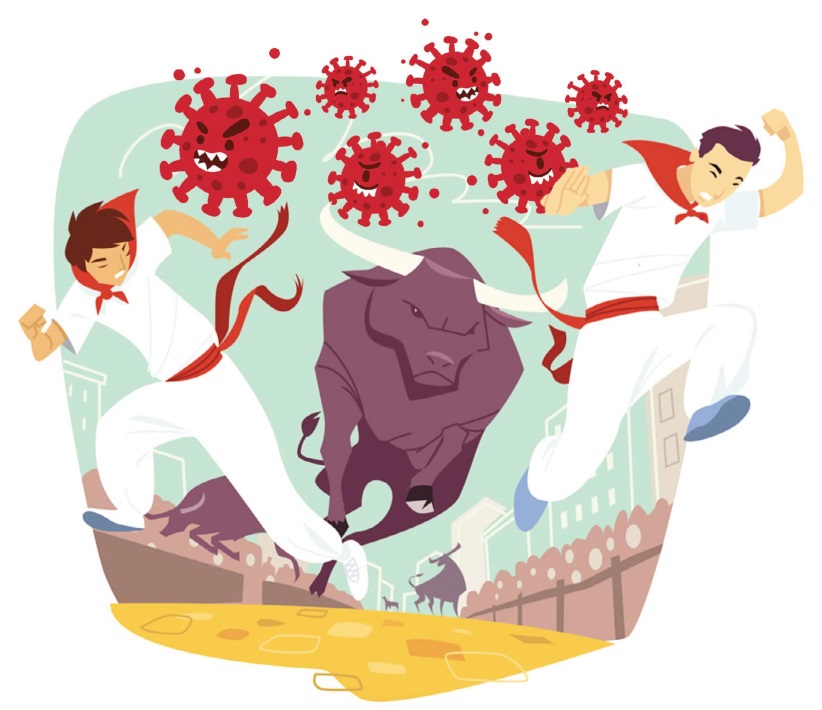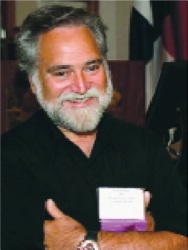ANCORA IMPARO RICK RADER, MD ■ EDITOR-IN-CHIEF
On Fitting Six Charging Bulls Into a Lab
Make no mistake, the disability community has the speed, strength, muscle and temperament to give the charging bulls of Pamploma a run for their money.
It's amazing how a slew of microbes stopped a slew of charging bulls without ever getting near them.
The COVID pandemic forced the cancellation of virtually every meeting, activity, event or gathering around the world. The "Running of the Bulls" in Pamplona, Spain was among those long-awaited events that fell victim and had to be cancelled this past year.
One would think that the last thing on the mind of runners trying to outrun fifteen-hundred pound angry bulls bred for destruction was the possibility of catching a virus. But the cancellation was a sound decision. While millions of people have died from COVID in a little over two years, there have only been 16 deaths from trampling since 1910, when record-keeping began.
One can only imagine how the originators of the event pitched the idea to the city officials back in 1591. "We have this idea to release six bulls onto the cobblestone streets of Pamplona to be corralled to the city's bullring. And just to spice it up, runners will demonstrate their bravado by dodging the angry bulls en route to the city center. There's going to be stampeding, trampling, gorings, pile-ups and blood and gore. We may even be able to franchise the event. Oh, and yeah, to give it a little bit of an edge we are going to use non-castrated bulls who are angry and crazy most of the time." Apparently, they were successful, as there are hundreds of "Bull Runnings" throughout Spain, Portugal, Mexico and France. The event in Pamplona is part of
the annual Festival of San Fermin known as the World's Largest Festival. Oh, and right before the start of the event they shoot off a rocket just to irritate the bulls. Never was the expression "what could go wrong" so appropriate.

According to the organizers of the San Fermin festival, the running of the bulls had its origins when the butchers brought the bulls from the ranches to the city to be slaughtered and sold. "The young apprentice butchers began to accompany the bull minders – the pastores – when these would shepherd the bulls up to the building. Often, they would run ahead of the bulls to entice them forward. With the passing of time, the event became
popular with the general public and the men began to run in front of the bulls instead of remaining behind the animals as the bull minders always do."

With that backdrop (bulls chasing runners in narrow streets) what research could possibly be conducted? Apparently there was this lurking question, "What happens when lots of people suddenly wish to move quickly?"
Dr. Daniel Parisi, a researcher in pedestrian dynamics from the Technological Institute of Buenos Aires set up cameras to study when and how a stampede begins. They already knew that loose crowds move fast and dense crowds slow (fans exiting from a sporting event or concert). Their research revealed an unexpected result when they observed how a crowd became both dense and faster. Of course, this might be unique to the nature of the event. They speculated that while the runners knew to expect the bulls, they didn’t know precisely when they’d show up. The anticipation of the assault initiated the stampede which took place in the dense crowd. They proposed that this research could be of benefit for crowd control, evacuations
NO BULL: The Running of the Bulls in Pamplona, Spain was among those longawaited events that fell victim to the COVID pandemic and had to be cancelled this past year.